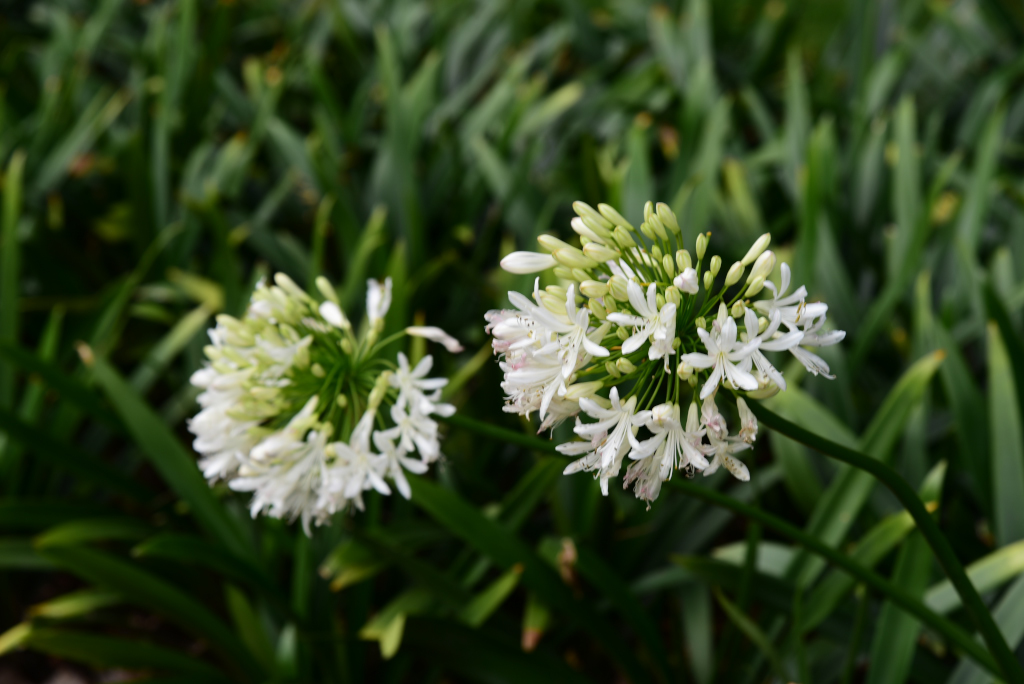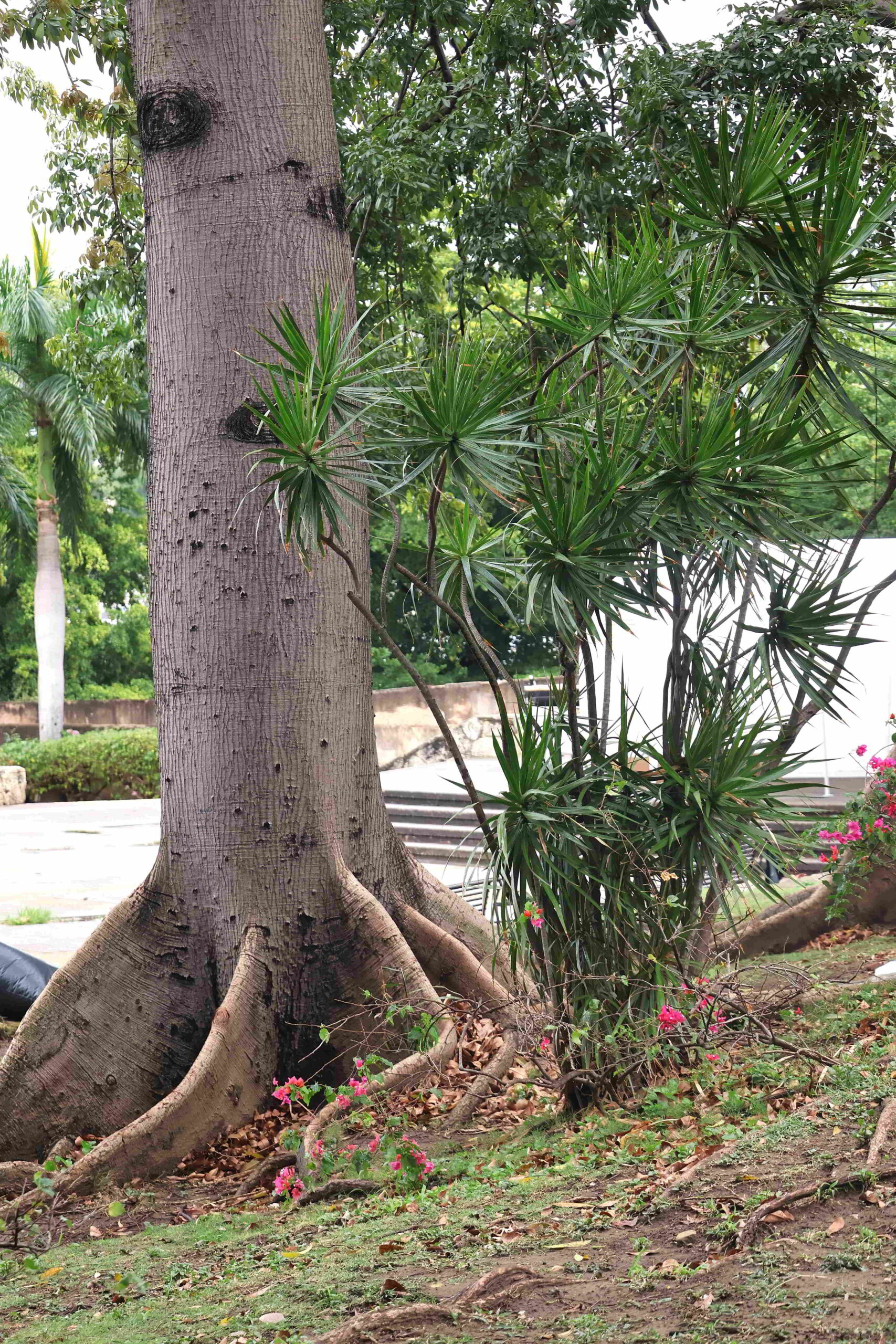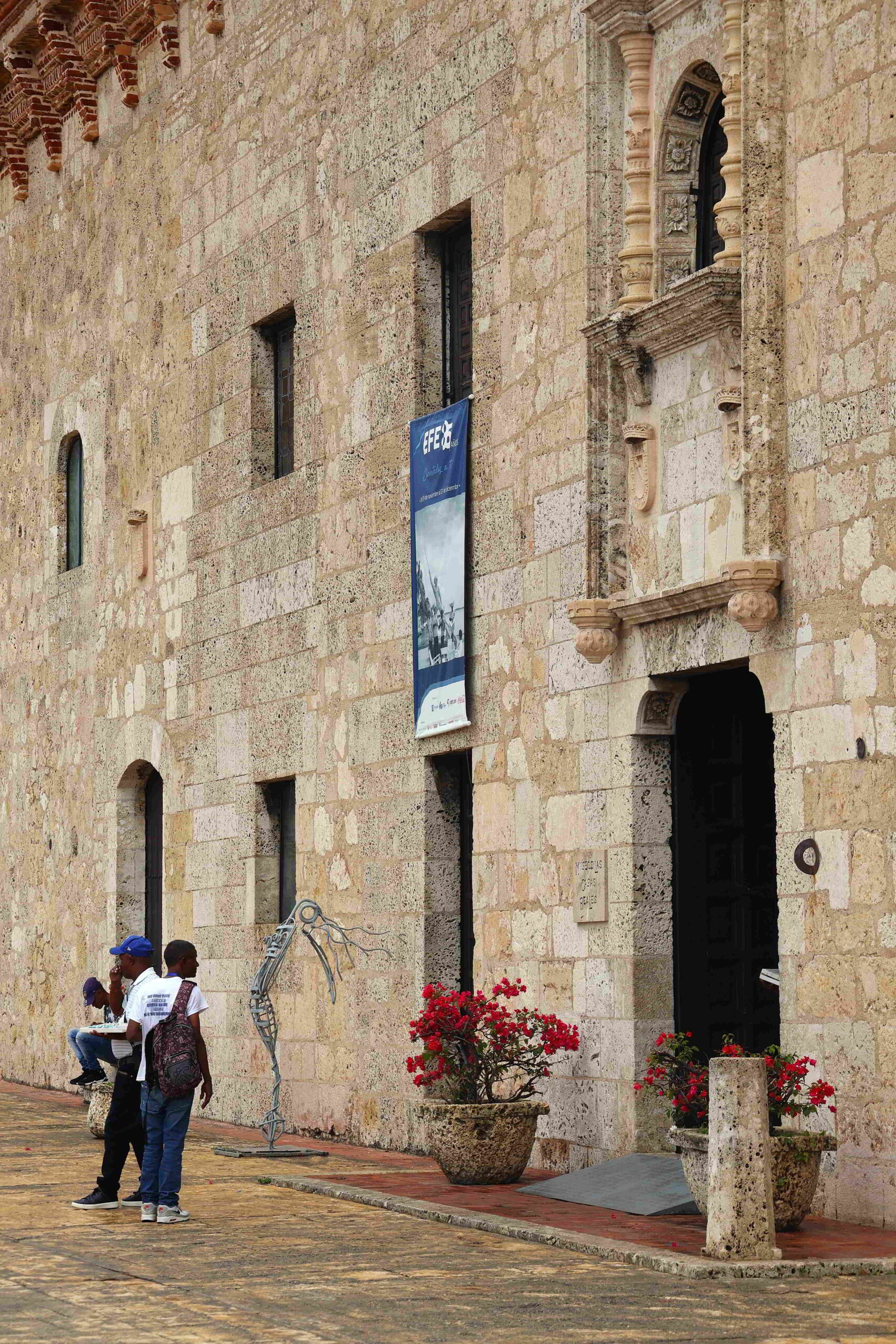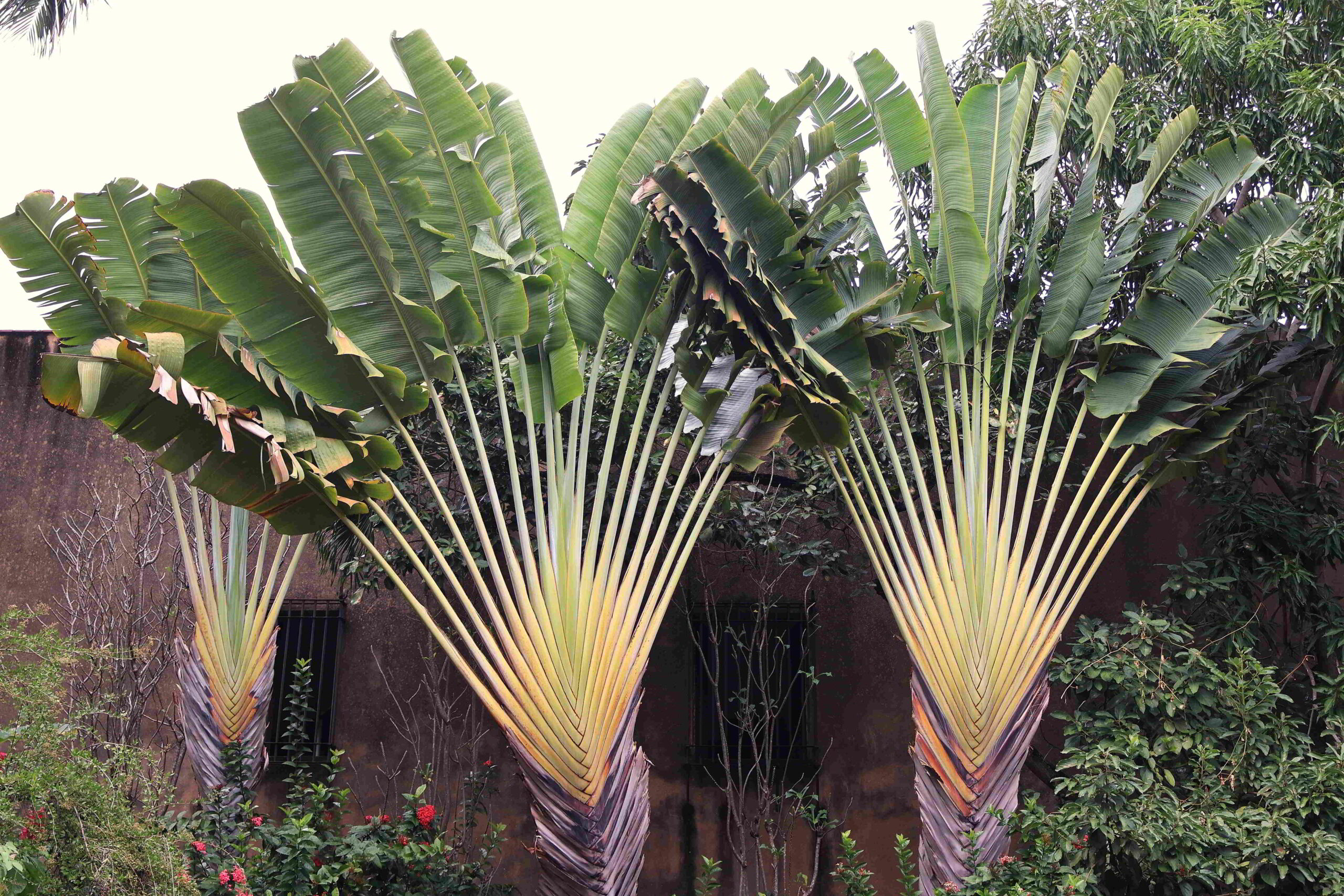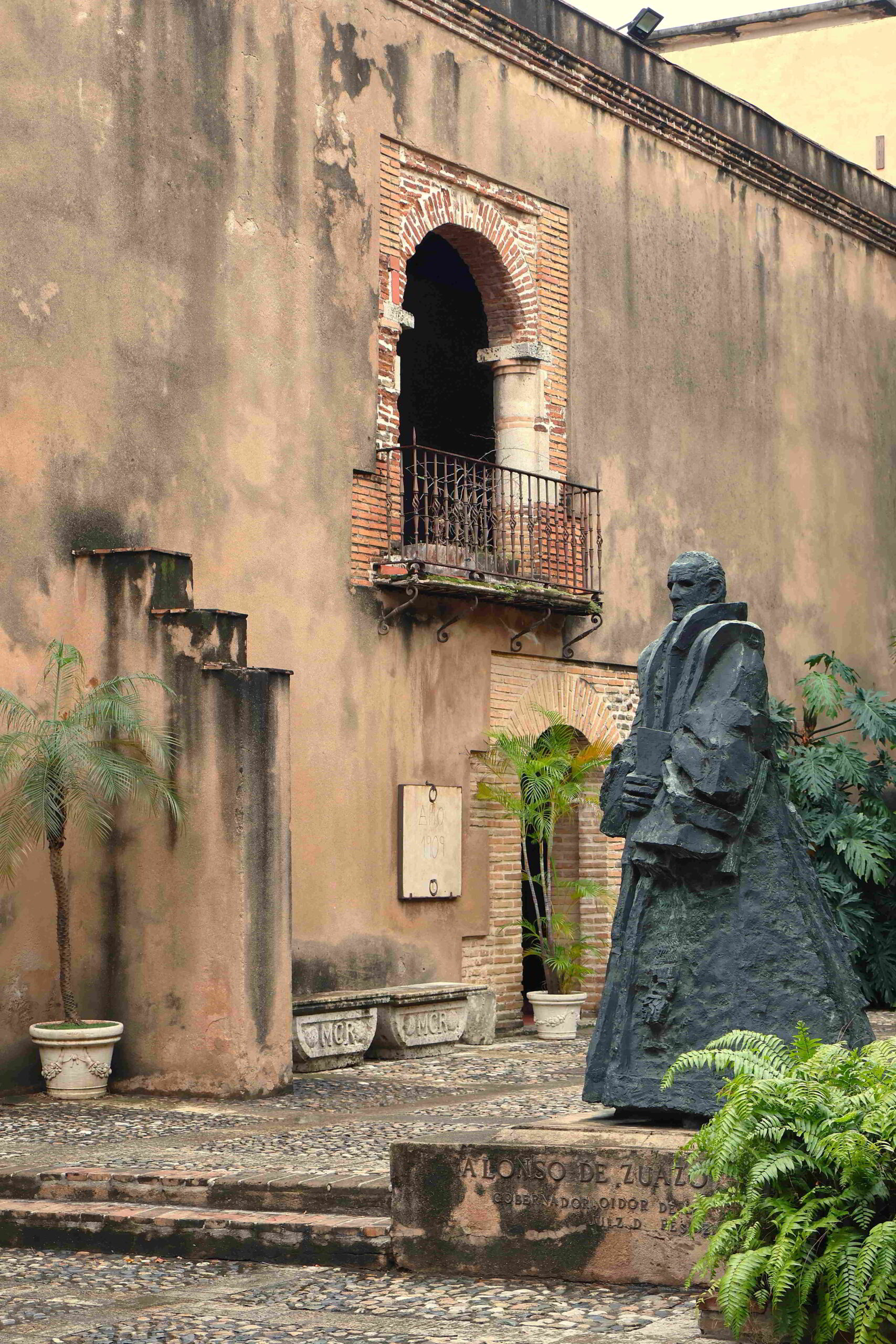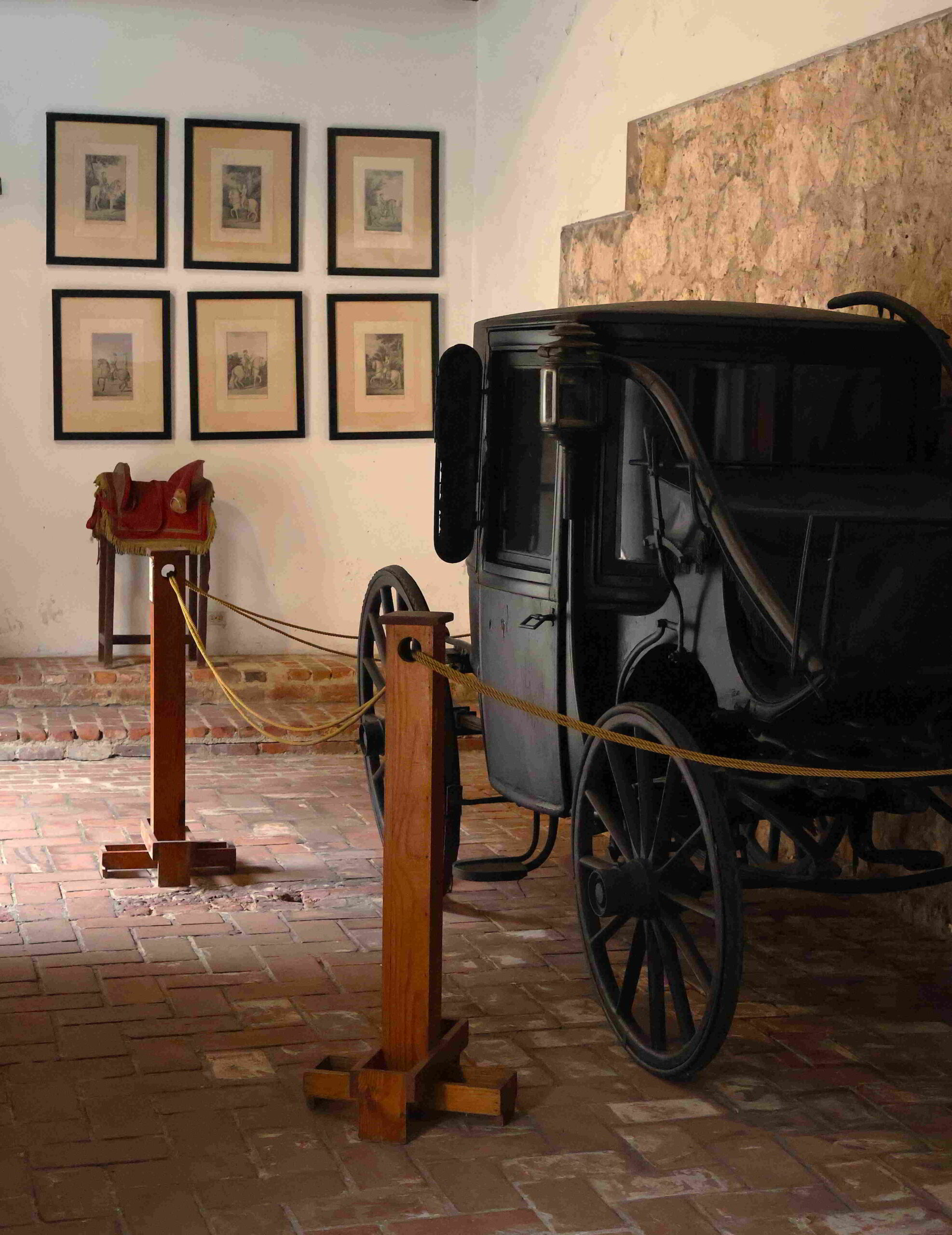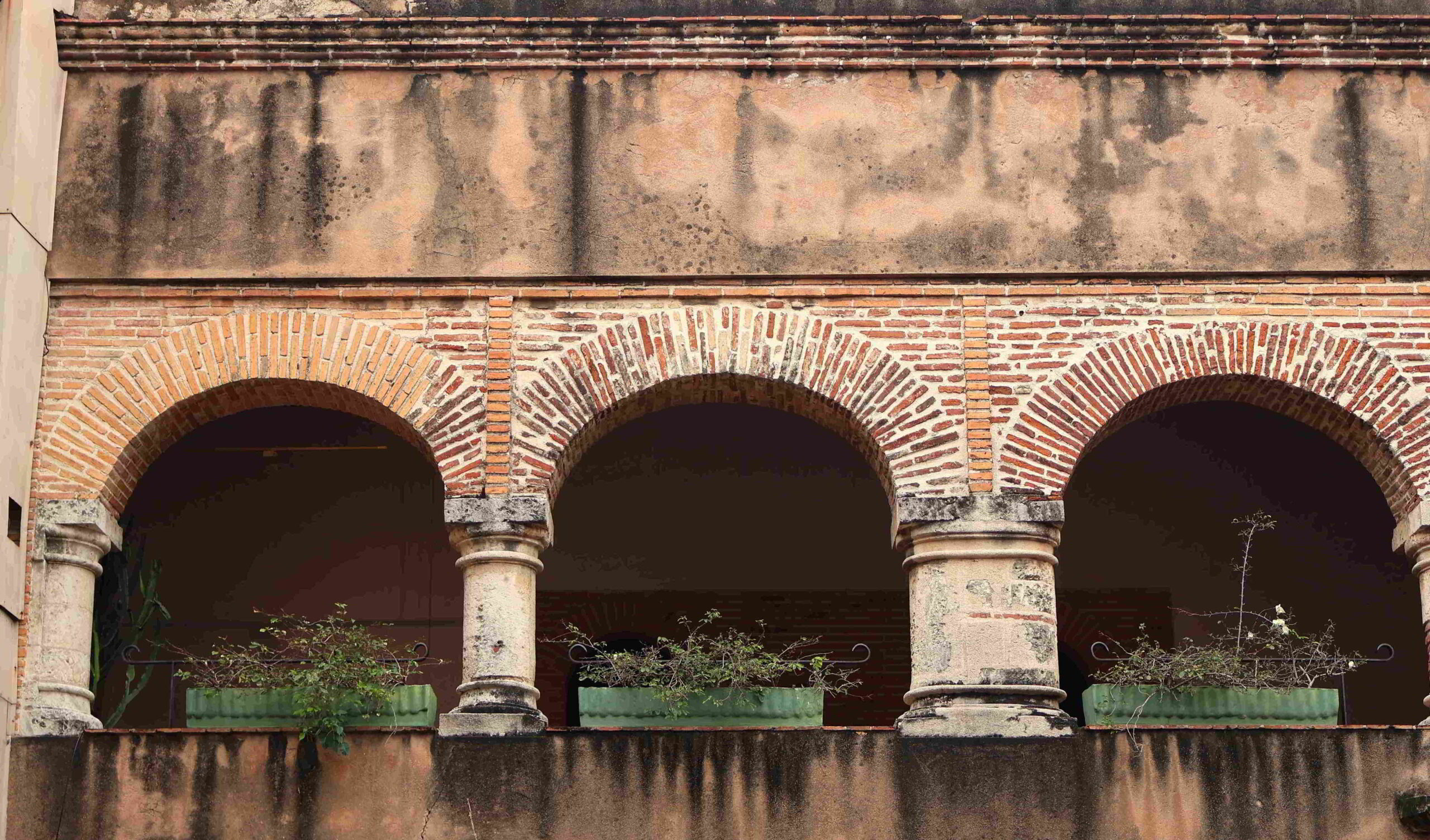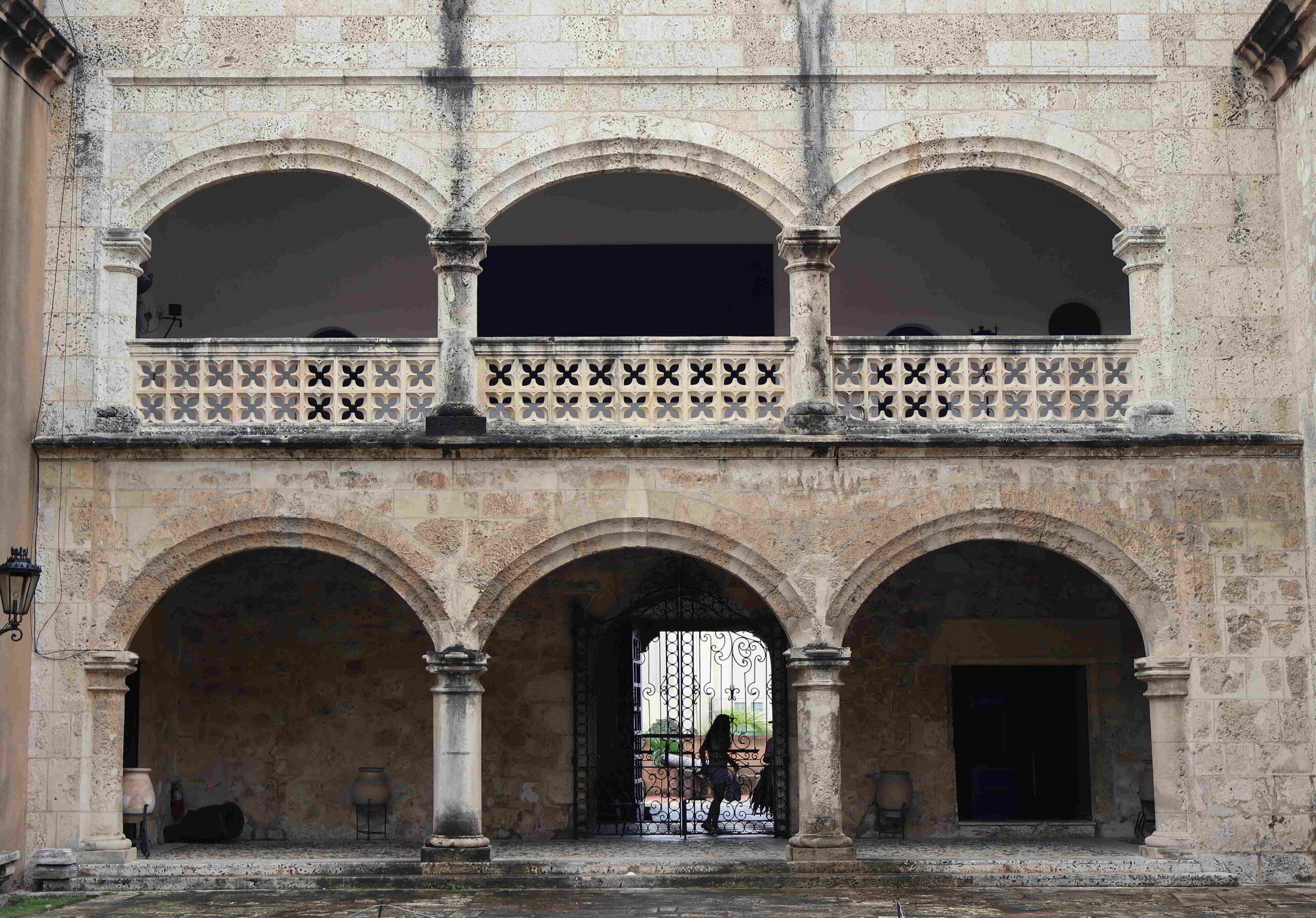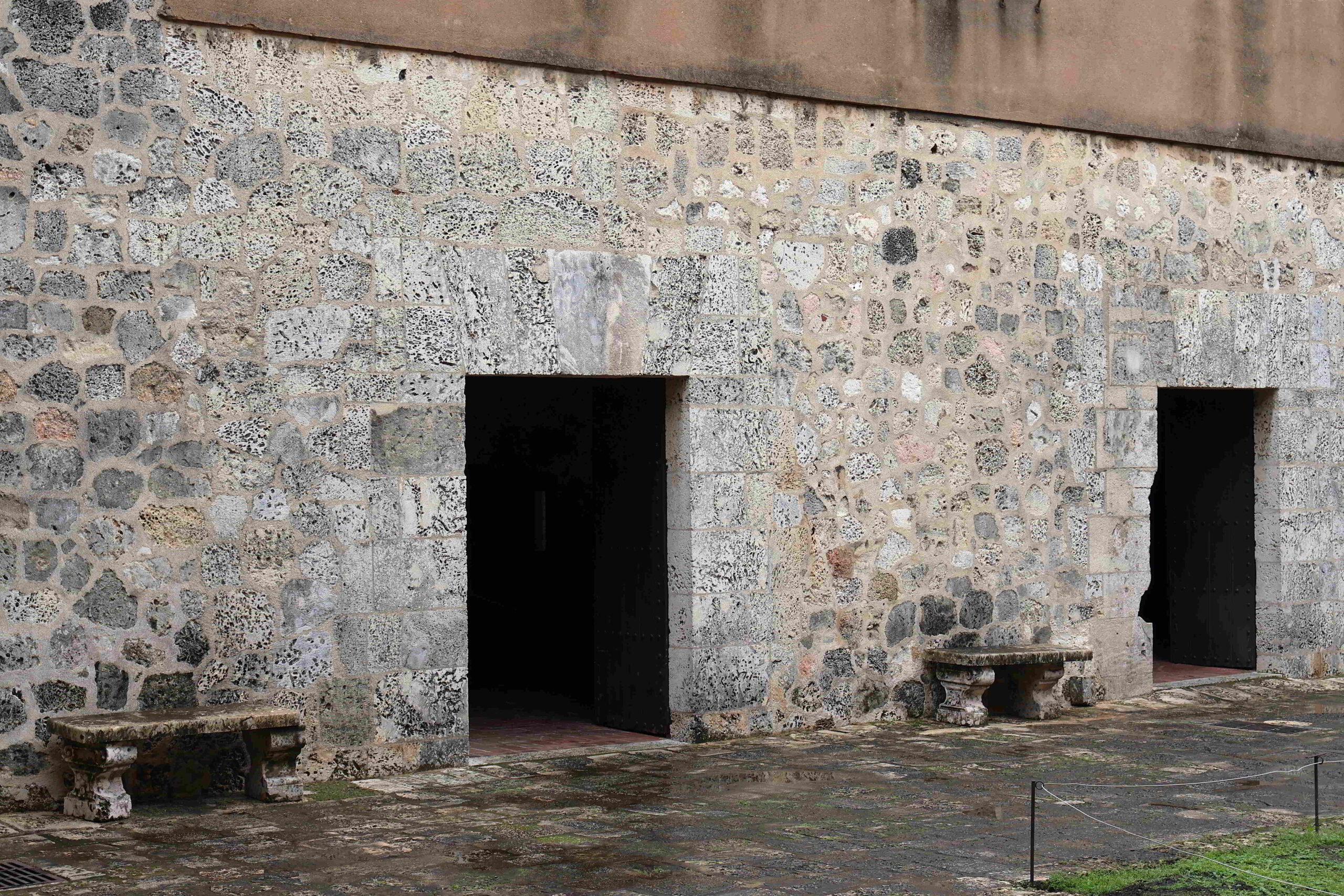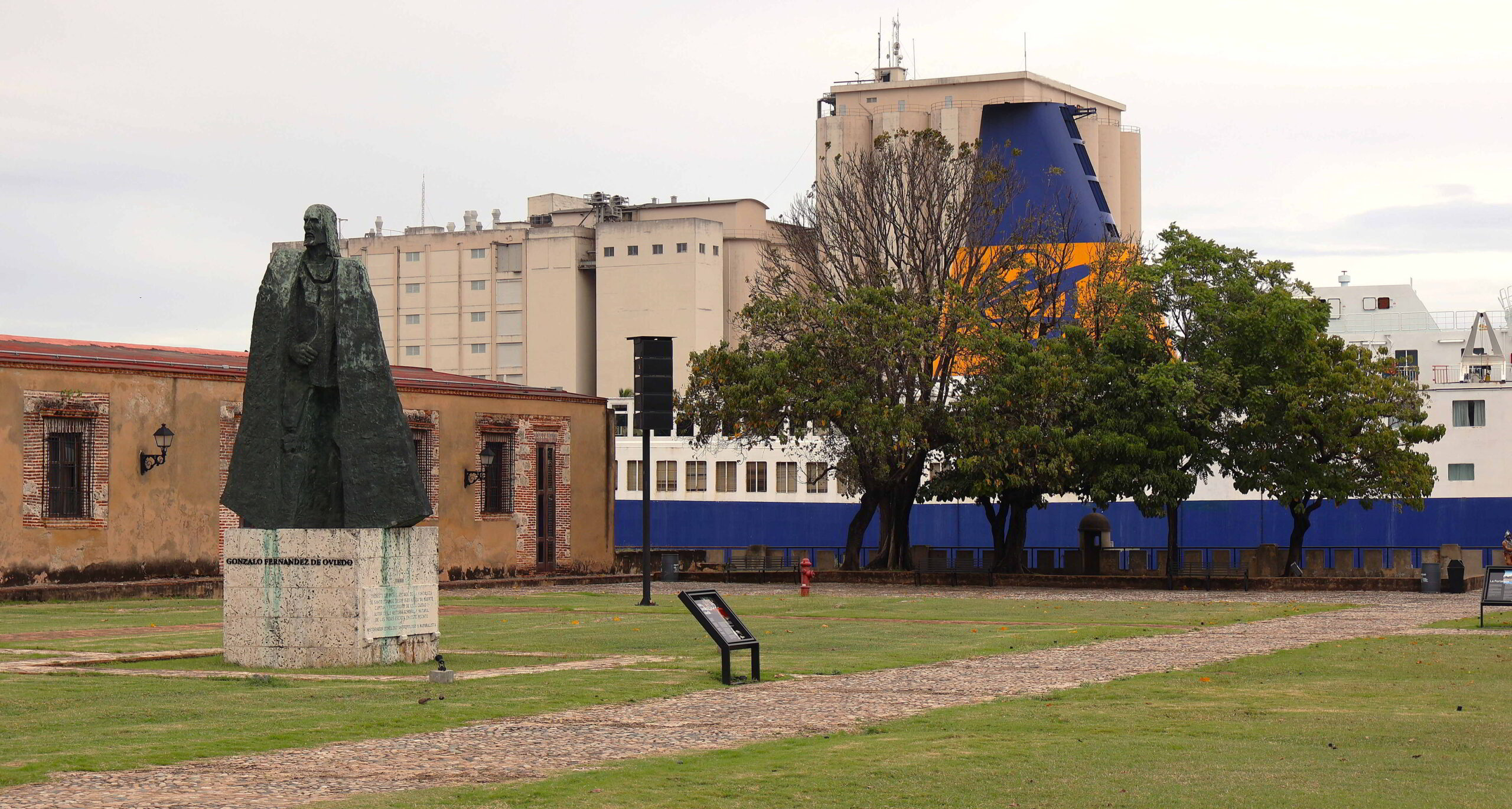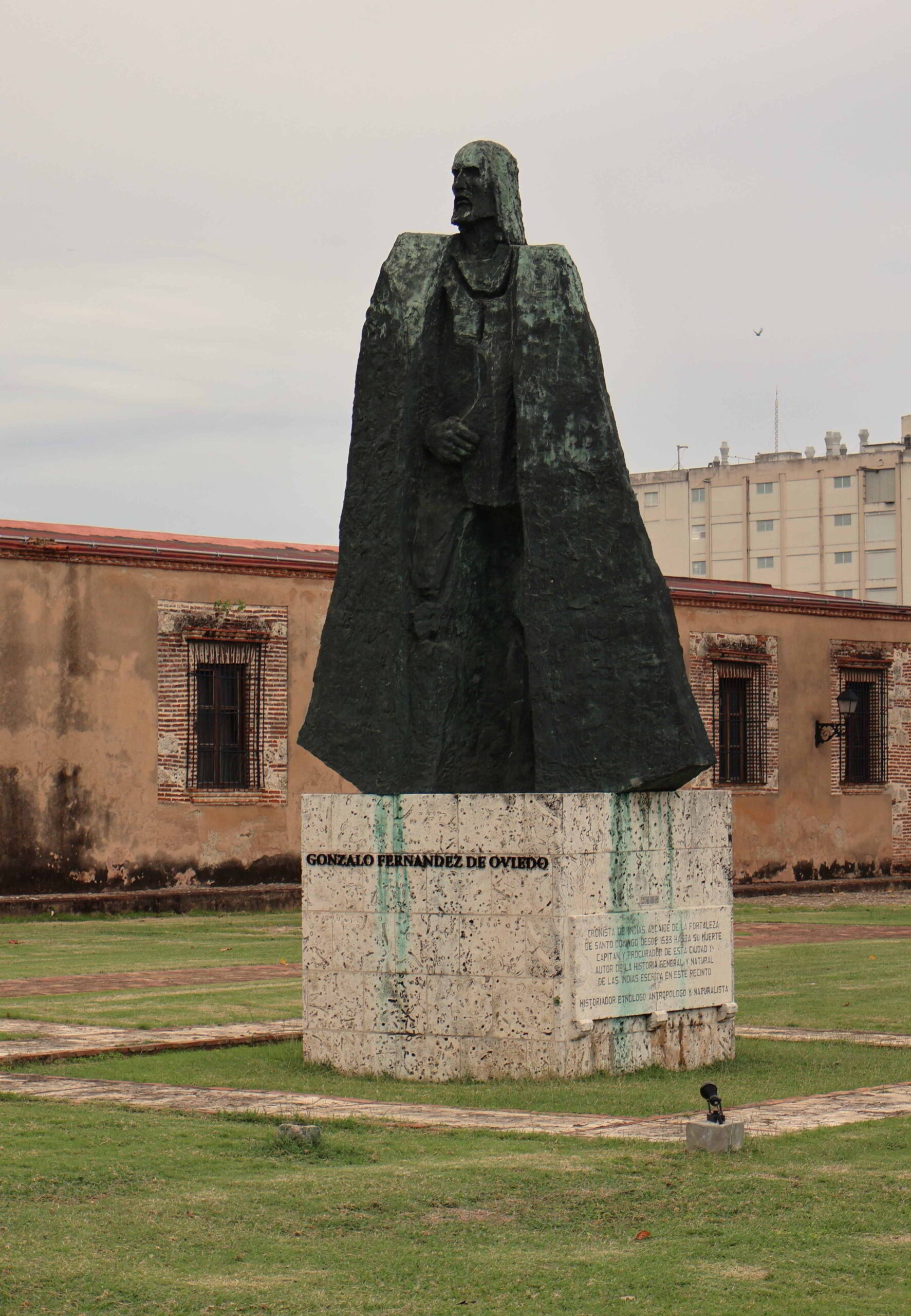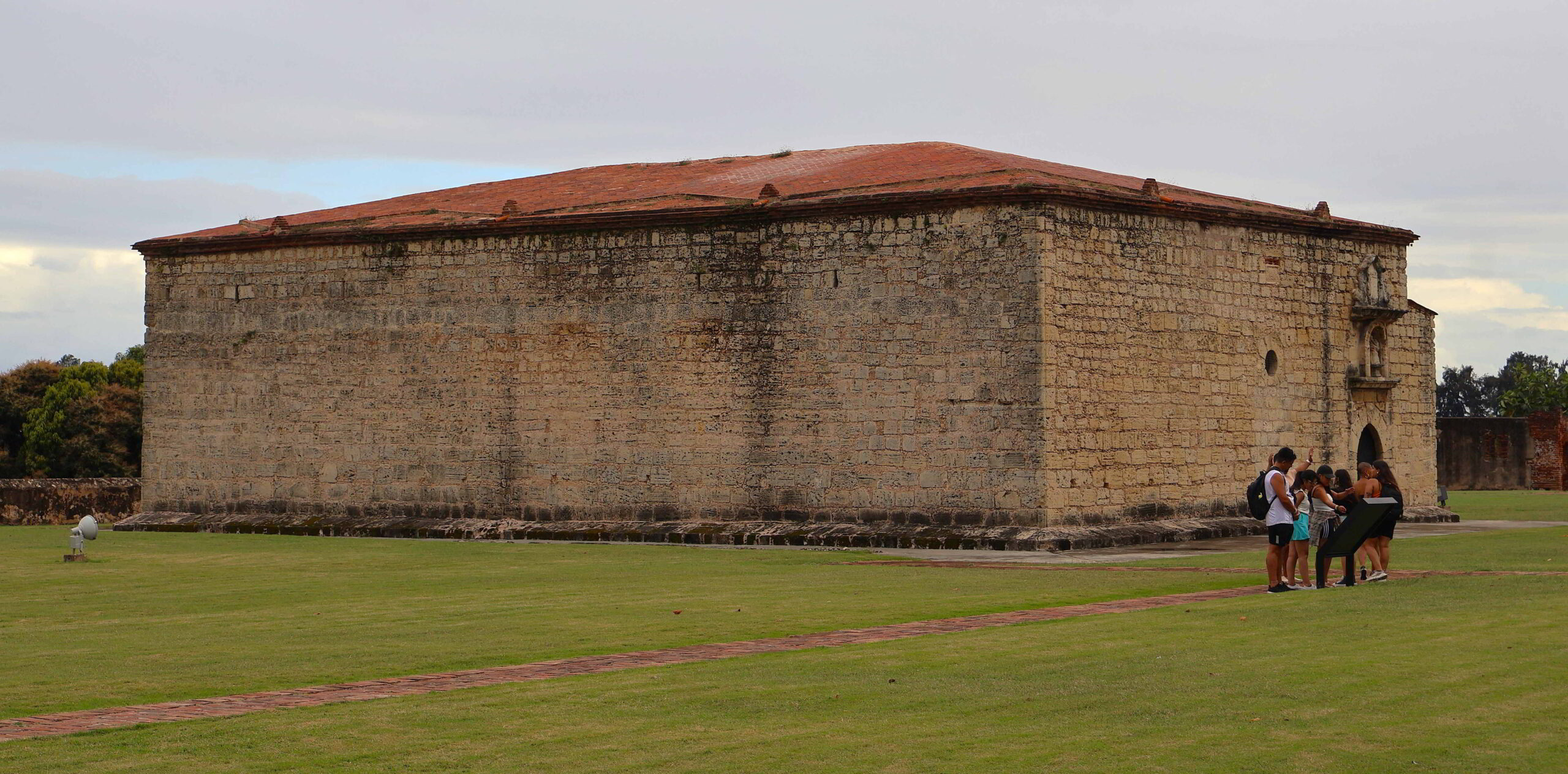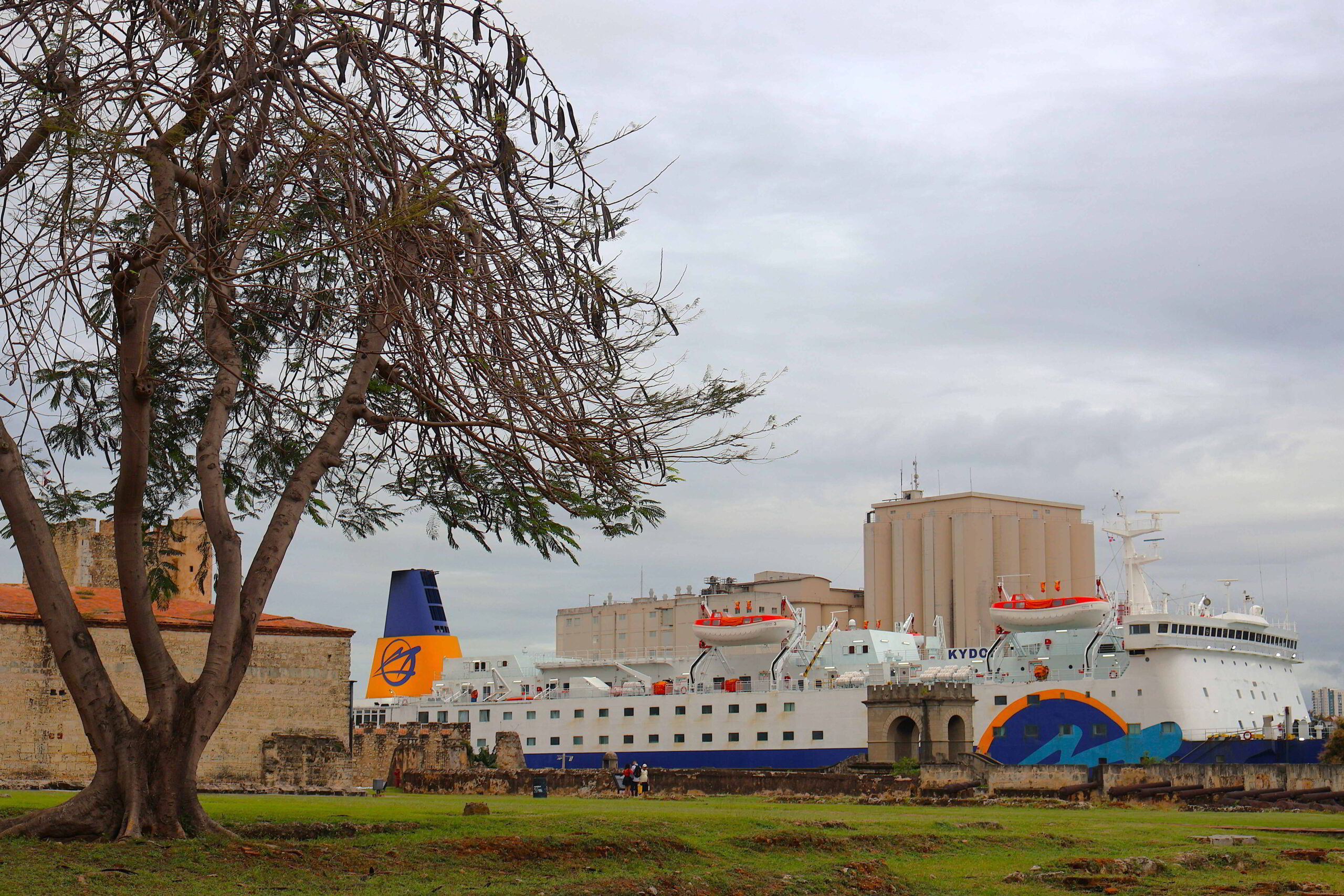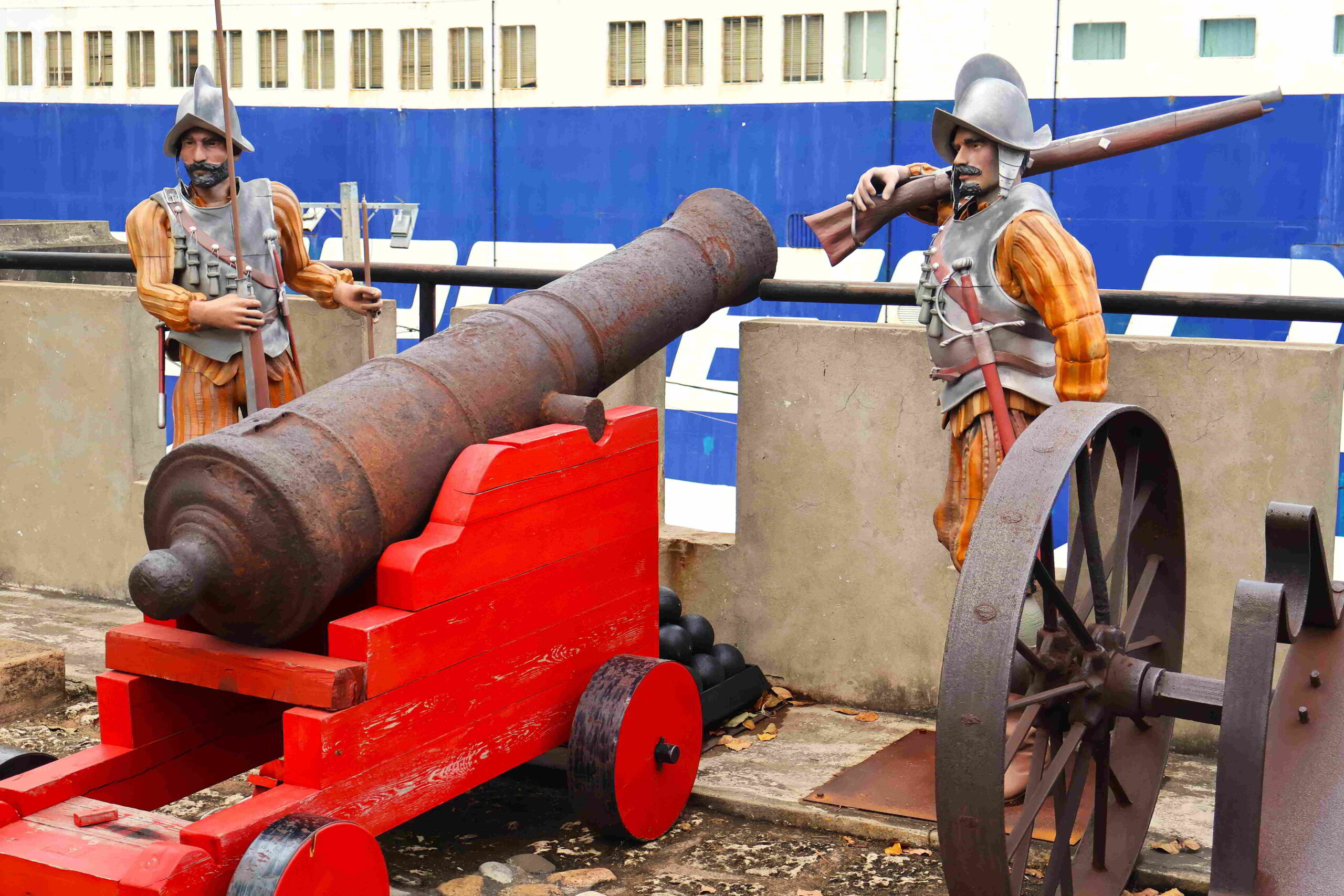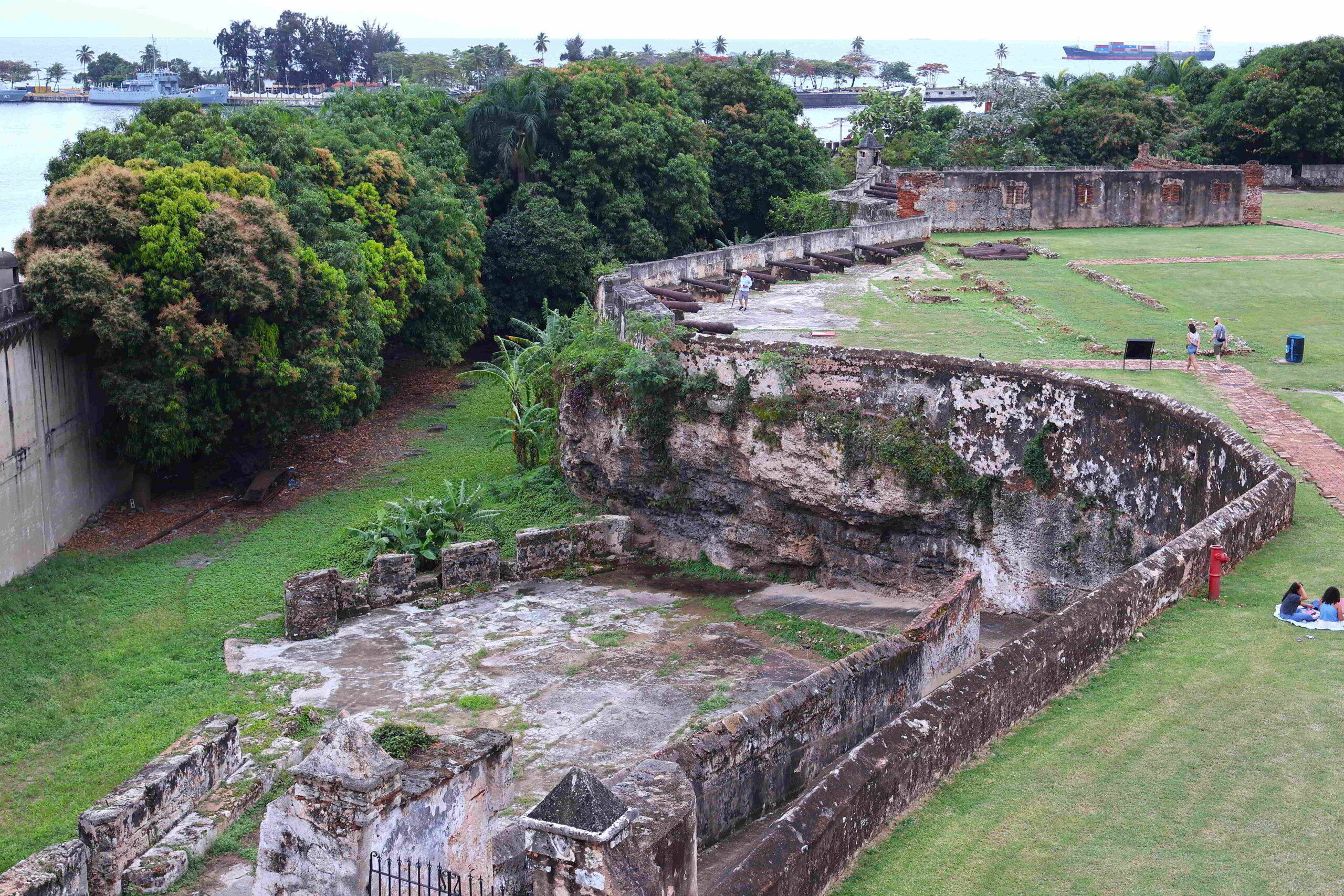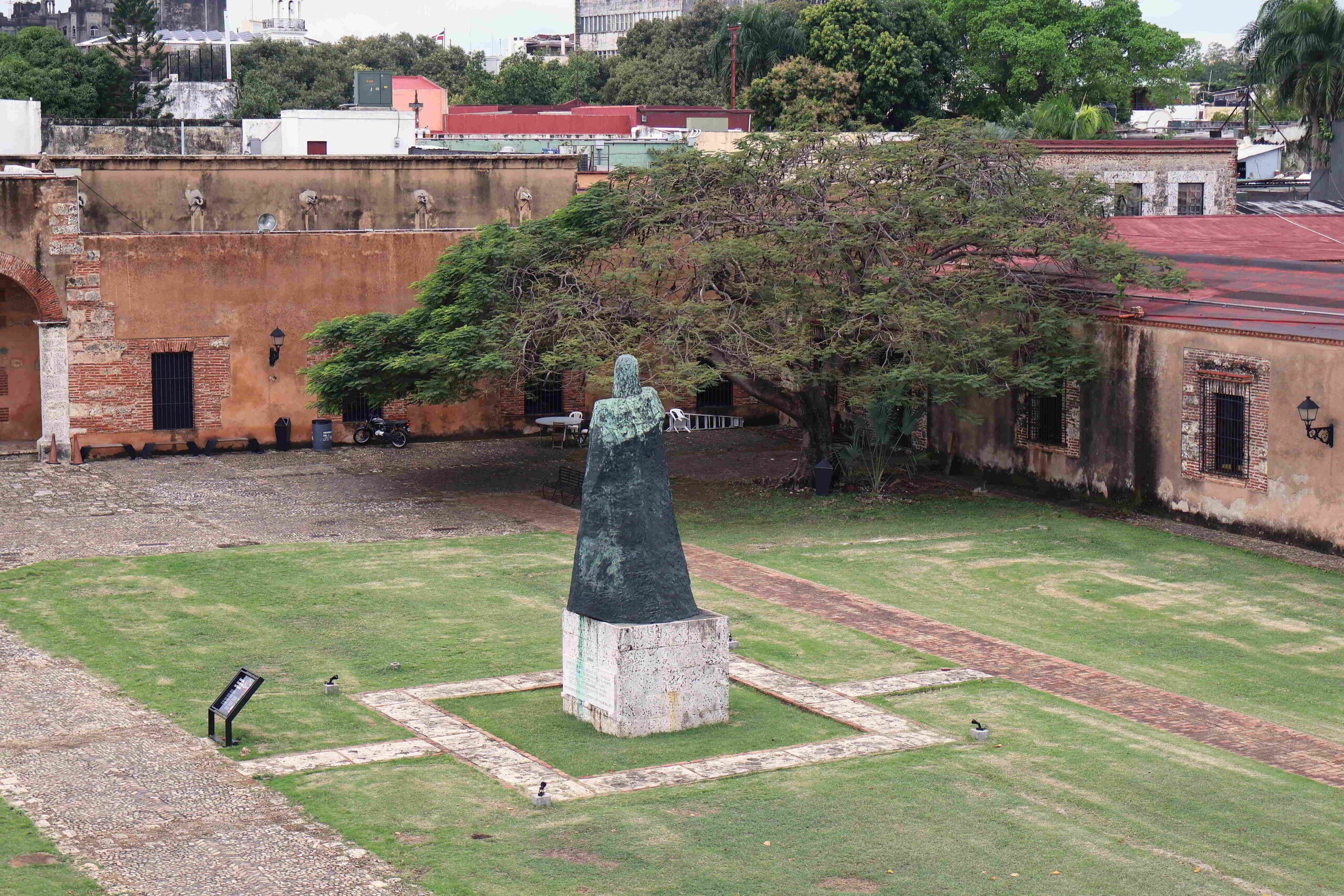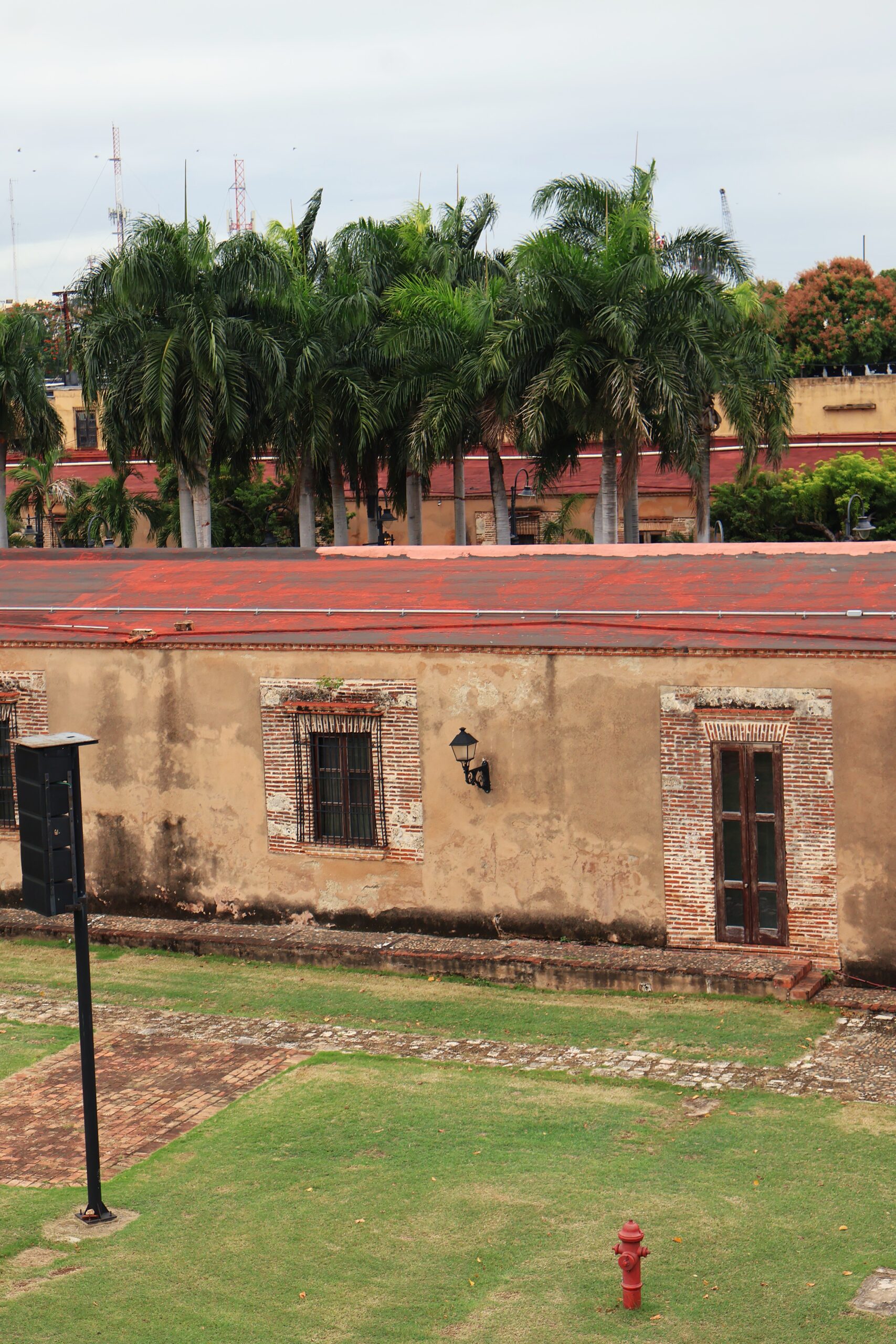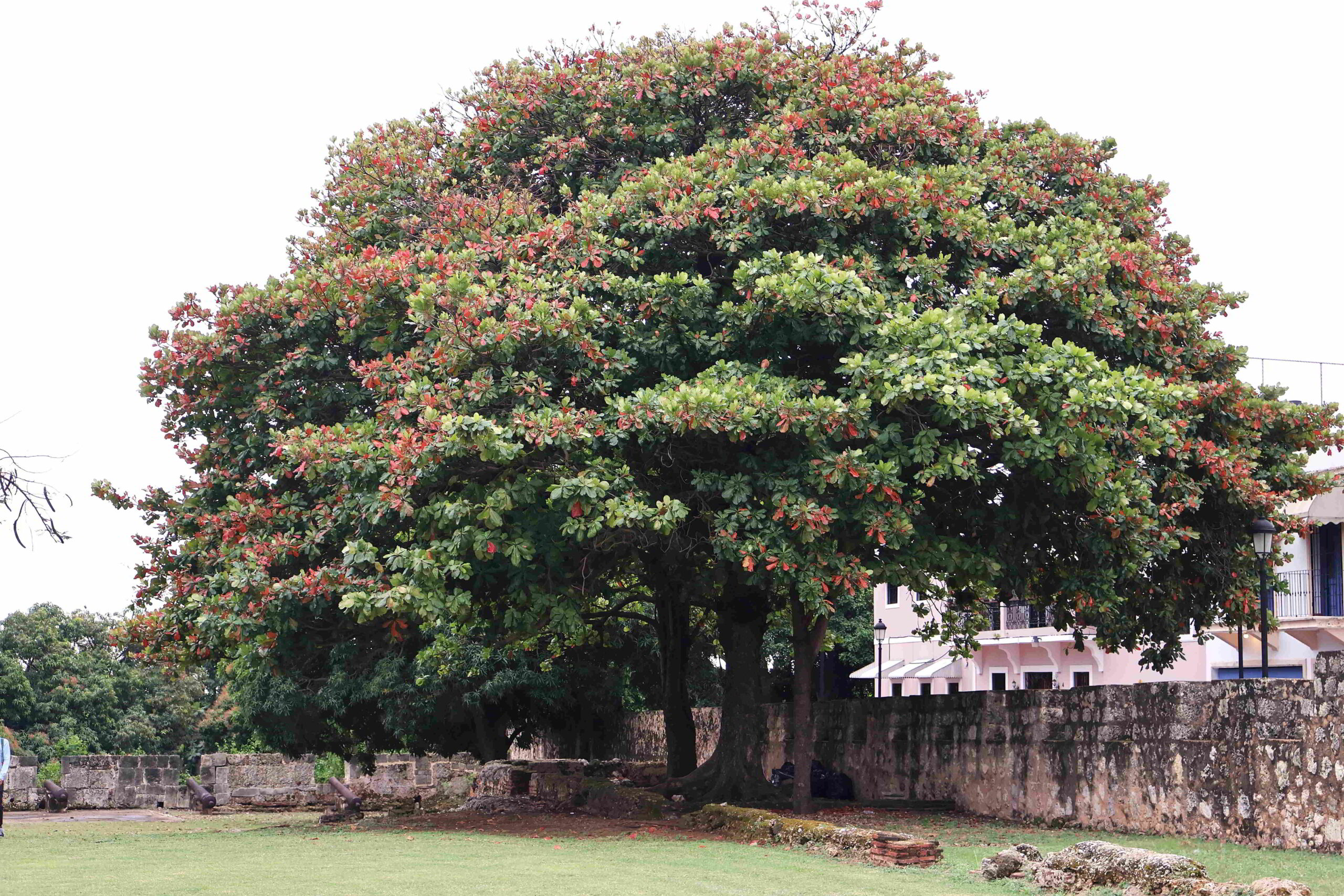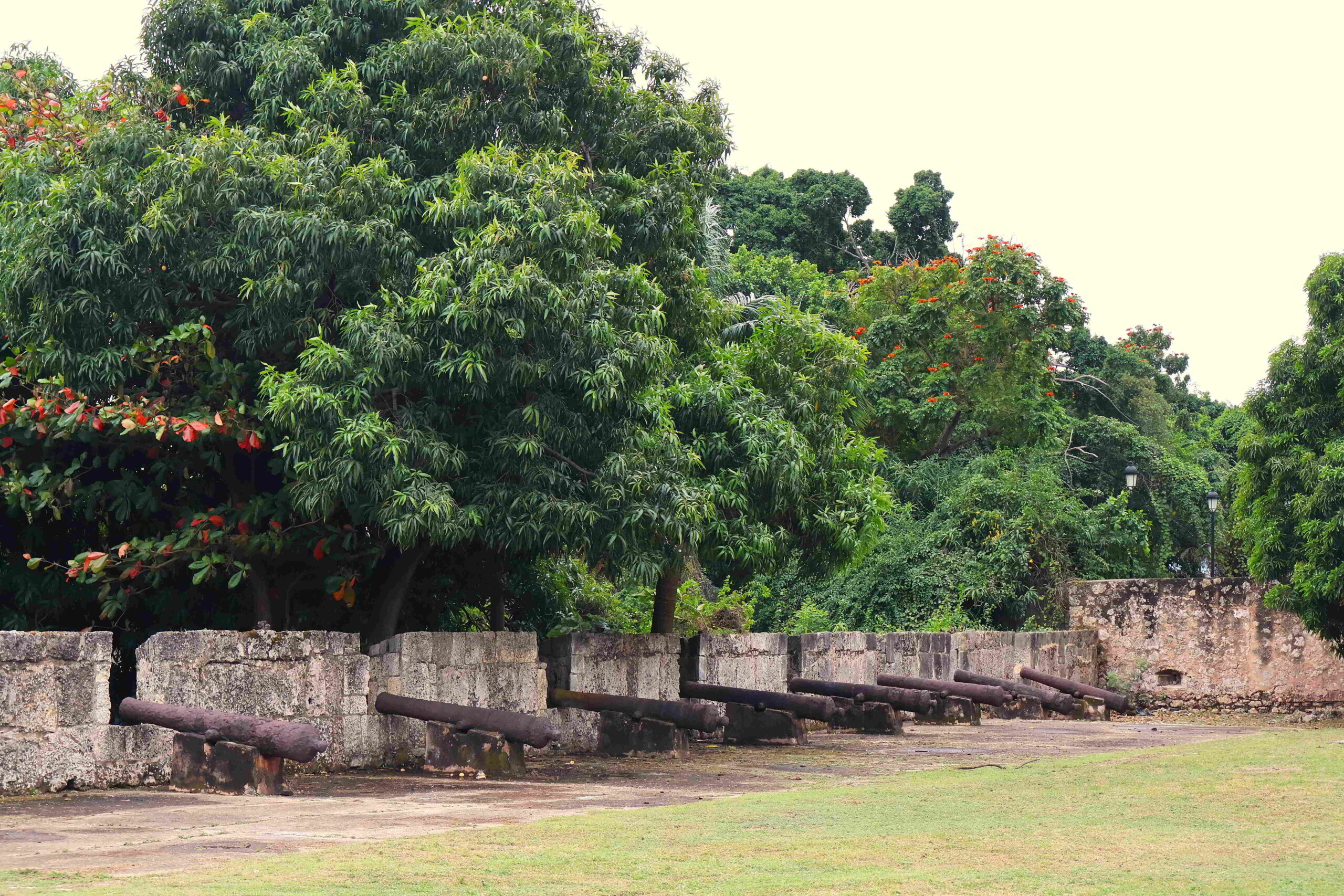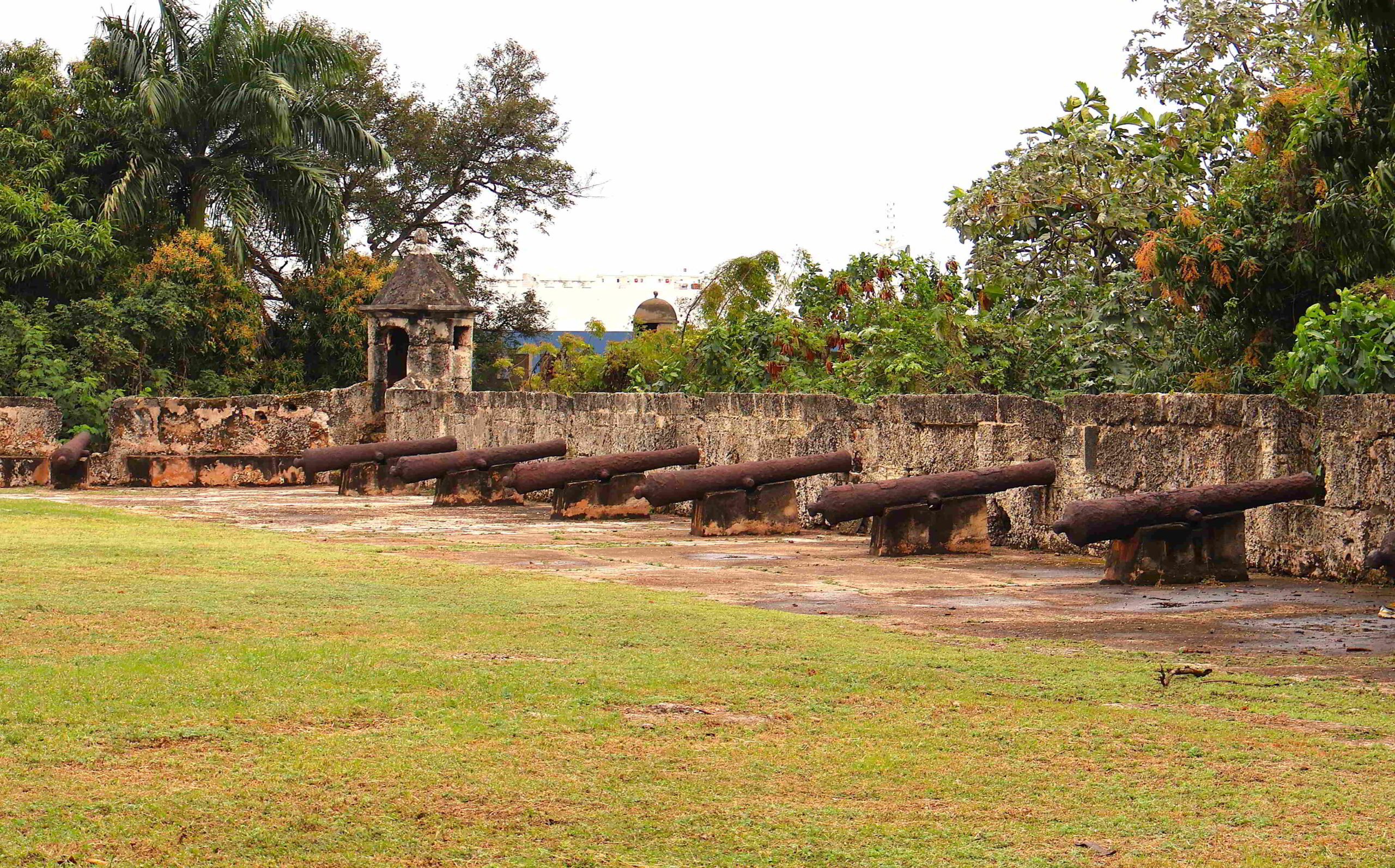February 15, 2025
I had big plans for the day – but unfortunately they don’t come out to very much, a challenge exacerbated by having woken up far too late in the morning. Well, breakfast is a nice affair anyway, scrambled eggs with diced tomato and onion, yoghurt, with fresh pineapple thrown into the mix.
By the time I leave the house, I have decided on visiting the Parque de los Tres Ojos on the eastern side of the city, followed by the botanical gardens to the north of where I am staying. But first, a good coffee in the upscale Piantini neighborhood.
Walking through the side streets to the north of Avenida 27 de Septiembre, I am surprised by the continuous sprawl of relatively generic mid-sized towers, whose vaguely imaginative embellishments don’t belie the uniformity of design and footprint. As the city’s most luxurious neighborhood, Piantini seems singularly uninteresting, with little to no sense of life on the street, despite the ostensible density of the area.
Then the sunny, blue sky clouds over, the sky turning grey, and in short order, it begins raining so heavily that I need to take shelter under the protruding balcony of a building and wait for the downpour to abate. I may be able to make it to the coffee shop I had wanted to visit, but the destinations planned for the day will have to wait for another time, as they are both largely outdoors, and this is just not the weather for being outdoors. How about a museum?
The Museo de las Casas Reales may be located in a stately historic palace at the bottom of the Calle las Damas, adjoining the Plaza de España o de la Hispanidad, but as impressive as it could be, it is anything but, featuring a meagre, self-evident if not self-congratulatory paean to the earliest years of Spanish colonialism, walking the visitor through a series of dimly-lit barren rooms featuring placards describing the exploits of the earliest arrivals, notably Christopher Columbus.
The exhibits extoll these men’s virtues while largely ignoring the consequences of their actions, the tone of the exhibition dated to the point of being eye-opening. The various Catholic orders that made their way here are mentioned as well, primarily the Dominicans, from which the island and city – that defined the essence of the country for most of its history – are described. The only interesting point that caught my eye is that the Dominicans were to some extent concerned about the welfare of indigenous Taino, who were wiped out over the ensuing centuries.
Dry information displays show the amount of trade between Santo Domingo and the other Caribbean islands and Spain, the exhibits also illustrating the lives of European settlers in the early colonial era. Overall, the museum requires a lot of updating to become more relevant, and certainly warrants a much higher degree of curation for what could be one of the primary destinations for visitors to the city.
The weather continues to be drab and unpredictable, so perhaps a visit to the Fortaleza Ozama down the Calle de las Damas would be in order, but not before imbibing in another delicate yet pungent chocolate caliente at the Kahkow Experience outlet en route. As you can easily see from the street, the fortress is nothing more than a large open field with a few isolated structures contained therein.
Despite its apparent simplicity, the Fortaleza Ozama is the oldest European military construction in the Americas, built at the beginning of the 16th century. Built of coral by black and Taino slaves, the main objective of this construction was to protect the city from the various attacks of the English, French, and Dutch pirates and conquerors. While much of the terrain is empty – presumably once containing structures that were at some point removed, with only the keep and gunpowder magazine remaining.
Visitors are allowed access to the keep, essentially a raw structure with a few terse exhibits describing the castle and its environment in its early years, including a few alcoves over the several floors dedicated to holographic exhibits. The only real attraction of climbing to the second floor is being able to view the surrounding terrain from the crenellated exterior passages, although there ultimately isn’t that much to see, other than perhaps the Ozama river mouthing on the ocean; visible from this vantage point, it is apparent that the river is blocked by a series of islets.
The magazine had some interesting features, the outer wall much thinner than the other walls, so that in case of an accident, the blast would carry toward the river, hence minimizing damage to the city, and the internal structure was also designed to minimize the effect of a possible spark igniting the gunpowder stored therein.
A large ferry boat is berthed next to and towers over the fortress, a paean to the varying scale of the respective eras the two represent. The larger grounds offer a pleasant place to relax, although there isn’t much to take in other than the occasional view of the narrow river below through the crenellated ramparts and the rows of cannons lining the walls. That said, any peaceful green space is welcome coming from the polluted mayhem of the streets of Santo Domingo. Wandering along the malecón to the south of the city could also be a refreshing experience, but given the recurrent downpours that have riddled the afternoon, it would be best to put a cap to the day’s efforts and return to the shelter of home.
Drivers are usually a laconic bunch, given that obvious tourists wouldn’t necessary be able to engage with their vernacular, although the driver of my Uber does speak Spanish relatively clearly, but with a speed that makes it all the same difficult to follow. He makes it clear that locals don’t go out in the historic district, as they stay in their respective neighborhoods – they prefer not to travel to different neighborhoods to go out. But then what’s with the endless traffic on the streets here, and the albeit small crowds of what are clearly locals milling about?
He concedes that the area still holds some degree of popularity with citizens of the city. Then of the many tourists allegedly visiting the city from the resorts, by the evening, they are largely gone. Not that there are that many privileged establishments catering to foreign tourists – the blocks around Parque Colón may be impressive, but appealing to a very limited clientele. He continues that Dominicans buy good cars, but the calibre of vehicles they drive should not be used to get an idea of their wealth, as they tend to buy the most expensive cars the bank allows them to borrow money for – in effect what they want to achieve is a high credit rating by borrowing as much as possible – then paying it off in some coordinated and consistent fashion.
The land in and around the Ciudad Colonial is incredibly valuable; despite looking like little, it is unreachable for ordinary Dominicans. What the driver finds incredible about the city is that next to highly desirable areas of the city are many areas that are profoundly dangerous. He tells me that the local neighborhoods can be very lively, and would be safe to visit for locals – but for foreigners, definitely not.
I don’t question what he tells me – and in any case, I am here for far too little time to engage in any deeper exploration. I get enough of a sense of being continually assessed by people on the street to suggest that it would be a good to simply keep walking – never mind not being able to wrap my head around the Caribbean Spanish.
As we drive through the darkened streets adjacent the colonial core, he points in the direction of darkened side streets, telling me that under no circumstances would you want to simply wander down those streets at night. He arcs artfully around obstacles and between disjoined roads, citing arcane challenges with trying to drive in a relatively straightforward fashion in the city.
The driver’s ebullience has certainly been refreshing: but now onto other things, what with my last night in Santo Domingo on yet another whirlwind trip, tomorrow on to Jarabacoa in the mountains, which will pose its own challenges, specifically travelling to smaller enclaves in neighboring towns.
As it goes with the typical last night in any place, all the food has to be used up, and despite not wanting to cook, well, that’s how I will spending the evening. Surprising this evening is that after the blaring music running late into the night yesterday, this evening is quiet. Perhaps the rain has put a damper on things …
